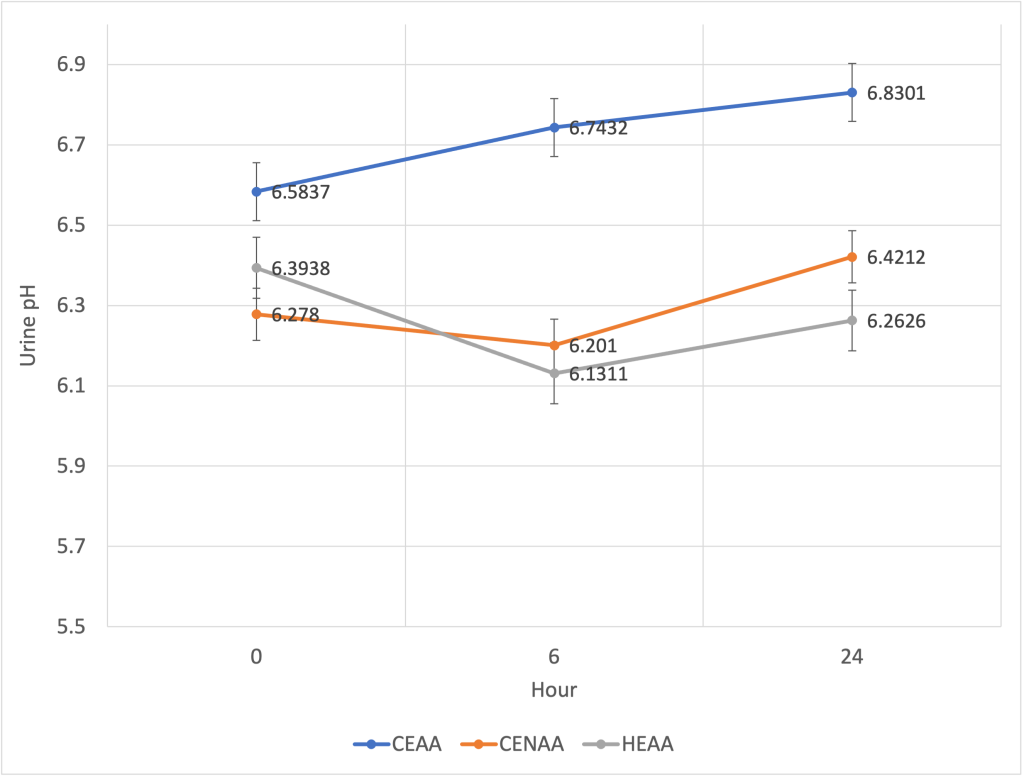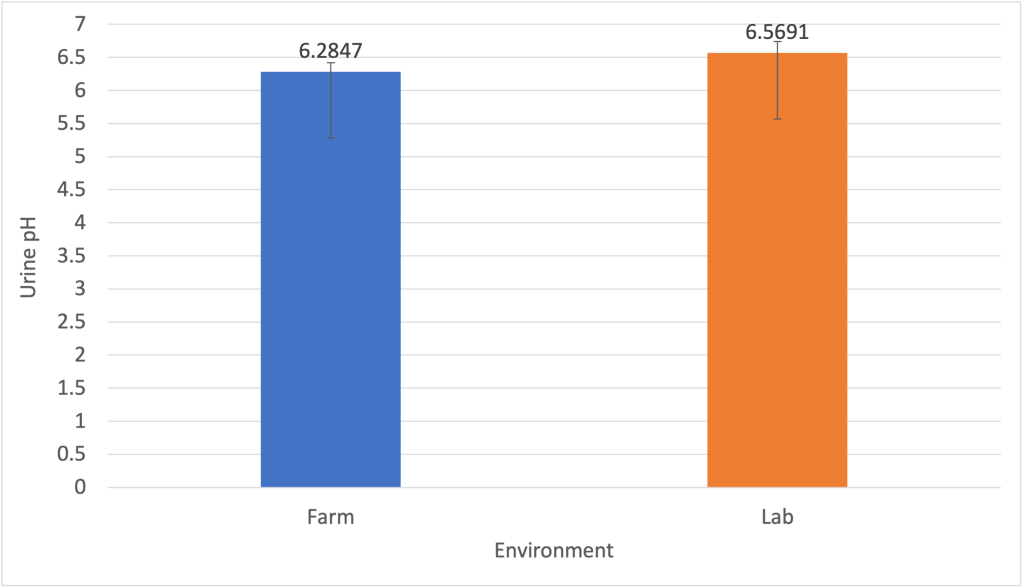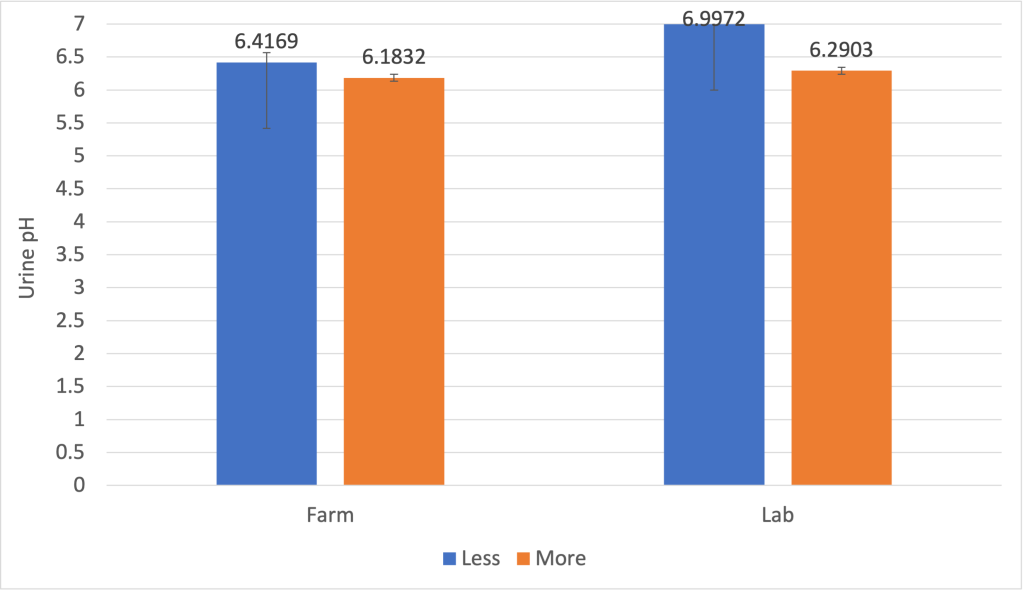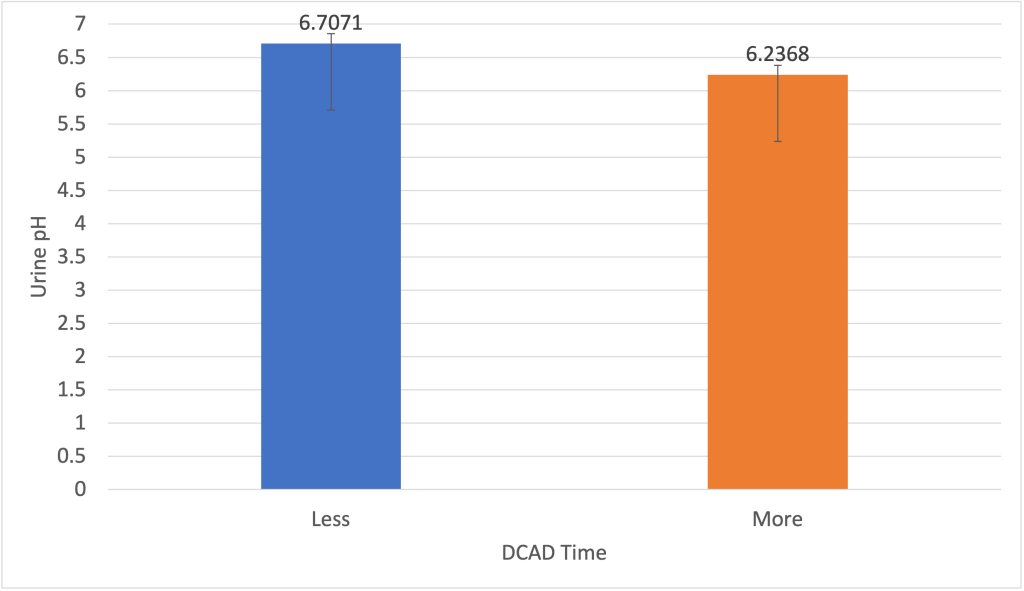Emma G. Prybylski, Emily S. O’Meara, and Dr. Phil Cardoso
May 2023
The transition period—the three weeks before and three weeks after calving—is crucial for maintaining dairy cow health because cows in this period are most susceptible to metabolic diseases. Postpartum metabolic disorders during the transition period include hypercalcemia, milk fever, mastitis, metritis, ketosis, displaced abomasum, retained placenta, and more. The onset of such diseases can create a domino effect that will negatively impact a cow’s lactation performance, fertility, life span, and overall health (Glosson et al., 2020). One way to combat this widespread problem is through the supplementation of cations, anions, and calcium in prepartum diets to successfully prepare cows for their postpartum period.
Managing calcium levels is essential for successful lactation and performance. Blood calcium concentration normally ranges from 2.25 to 2.5 mM, and it is regulated by parathyroid hormone (PTH). During the last weeks of their pregnancy, cows only need enough calcium for maintenance, ranging from 20 to 32 g/d (grams per day) (Glosson et al., 2020; Goff & Horst, 1997). After calving, 30 to 50 g/d of calcium is needed for optimal milk production and peak performance. Any factor that interferes with maintenance of these calcium concentrations can have devastating effects on a cow’s postpartum health (Glosson et al., 2020; Horst et al., 2005).
One way to prevent metabolic disorders in dry cows is by feeding negative DCAD (dietary cation-anion difference) diets. The equation to describe DCAD is (Na + K) − (Cl + S), with all values expressed in milliequivalents (mEq) per 100 g or kg of dietary dry matter (Oetzel, 2022). Negative DCAD diets are used prepartum to induce compensated metabolic acidosis in the rumen, which can be detected by noting decreased urine pH (ranging from 5.5 to 6) and increased calcium excretion in the urine (Glosson et al., 2020). In the state of compensated metabolic acidosis, calcium is absorbed from the rumen and small intestine and utilized by the bones, with the remainder excreted through the urine to maintain rumen and body homeostasis. This cycle allows for a cow to have calcium readily available for when lactation begins. Urine samples can be taken to measure a cow’s metabolic response to the diet and to determine if adjustments are needed to maintain the desired pH range to induce acidosis (Glosson et al., 2020).
Experimental setup
Twenty Holstein cows were assessed in a photoperiod barn at the University of Illinois Lincoln Avenue Dairy Research Facility in the fall of 2022. Cows were assigned either a controlled energy (CEAA), high energy (HEAA), or lactation diet (CENAA). Urine pH samples were collected once per week at hour 0 (9 am), hour 6 (3 pm), and hour 24 (9 am). Hour 0 urine was collected in a milk tube and transferred to the University of Illinois Animal Sciences Laboratory to be further measured at hours 6 and 24. Urine pH was also evaluated at the farm at hours 0, 6, and 24.
Urine pH not affected by dietary energy level
Cows fed the three dietary treatments (CEAA, HEAA, CENAA) did not differ in urine pH levels at hours 0, 6, and 24, as shown in Figure 1 (P = 0.8258).

Fig. 1. The three treatments (CEAA, HEAA, CENAA) and urine pH levels at hours 0, 6, and 24.
Evaluating urine samples: farm vs. lab
Additionally, urine samples showed no significant urine pH changes when evaluated at hour 0, hour 6, or hour 24. This was true for samples evaluated at the farm or at the lab. This is illustrated in Figure 2 (P = 0.8527).

Fig. 2. The environments (farm and laboratory) and urine pH measured at hours 0, 6, and 24.
However, there was a significant difference in urine pH between samples evaluated in the different environments, as shown in Figure 3 (P = 0.0407).

Fig. 3. The environments (farm and laboratory) and average urine pH.
The urine samples evaluated at the laboratory were transported from the farm in milk vials at hour 0 and then placed on a laboratory benchtop for 24 hours. Urine contains bacteria that produce large amounts of ammonia, which can make solutions such as urine more alkaline, increasing pH (Kastl, 2021). Thus, keeping urine samples at room temperature for extended periods can result in inaccurate pH readings.
That said, evaluating urine samples at the farm compared to the lab is preferred, as dairy barns typically contain proper ventilation systems to continuously exchange inside air for drier, cooler outside air (Graves, 2016). These conditions are more desirable for urine pH accuracy, as improper storage and higher temperatures can result in alkaline pH levels.
Urine pH affected by time on DCAD diet
We also evaluated the effects of the environment and DCAD days on urine pH levels, and the results are in Figure 4 (P = 0.0419). The variable “days” is defined as the time between urine pH collection and the calving date. If samples were taken < 14 days from calving, these samples were classified as “more,” as these cows had been on the DCAD diet for longer. Samples taken farther away from calving (> 14 days) were classified as “less” (P < 0.0001). Cows with “less” DCAD time were sampled on average 21.38 days from calving, whereas cows with “more” DCAD time were sampled on average 8.68 days from calving.

Fig. 4. Effects of the environment and DCAD days on urine pH levels.
DCAD time had a significant impact on urine pH levels; cows with “less” DCAD days had a higher urine pH than cows with “more” DCAD days (Figure 5).

Fig. 5. Effect of DCAD time on urine pH values.
References
Goff J.P., Horst R.L. Effects of the addition of potassium or sodium, but not calcium, to prepartum rations on milk fever in dairy cows. J. Dairy Sci., 80 (1997), pp. 176-186.
https://doi.org/10.3168/jds.S0022-0302(97)75925-3
Graves, R. (2016, July 13). Natural Ventilation for Freestall Barns. Retrieved December 6, 2022, from https://extension.psu.edu/natural-ventilation-for-freestall-barns.
G.R. Oetzel, FEED SUPPLEMENTS | Anionic Salts, Editor(s): Hubert Roginski, Encyclopedia of Dairy Sciences, Elsevier, 2002, Pages 985-991, ISBN 9780122272356.
https://doi.org/10.1016/B0-12-227235-8/00369-2
Horst R.L., Goff J.P., Reinhardt T. Adapting to the transition between gestation and lactation: Differences between rat, human and dairy cow. J. Mammary Gland Biol. Neoplasia, 10 (2005), pp. 141-156.
https://doi.org/10.1007/s10911-005-5397-x
Kastl, B. (2021, November 22). The Wizz Quiz: Understanding Urinalysis. Retrieved December 6, 2022, from https://www.ksvdl.org/resources/news/diagnostic_insights_for_technicians/april2019/understanding-urinalysis.html.
Glosson, K.M. et al. Negative dietary cation-anion difference and amount of calcium in prepartum diets: Effects on milk production, blood calcium, and health. Journal of Dairy Science, Volume 103, Issue 8, 7039 – 7054.
https://doi.org/10.3168/jds.2019-18068

